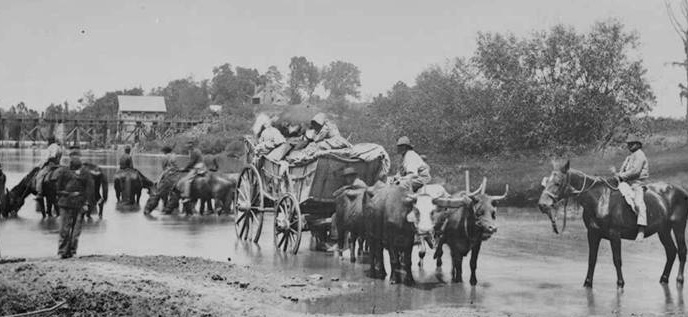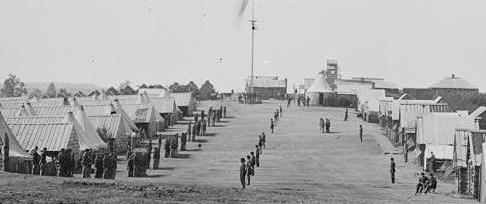Posts Tagged ‘Virginia’
On Slavery 9 – Partus Sequitur Ventrem
When considering slaves, Colonial Virginians abandoned the English tradition of partus sequitur patrem (one’s status was determined by the disposition of their father) in favor of the Roman principle of partus sequitur ventrem, a “child inherits the condition of the mother.” (1) Thus offspring of slave women were the property of their mother’s owner whether fathered by freeman or not. Annette Gordon–Reed, in her book “The Hemingses of Monticello: An American Family,” speculates on why Virginian colonists made up this particular form of slavery that endured until the Civil War.
“White men, particularly the ones who made up the House of Burgesses, the legislature in colonial Virginia, were the masters of a growing numbers of African women, owning not only their labor but their very bodies. That these women sometimes would be used for sex as well as work must have occurred to the burgesses. Inevitably offspring would arise from some of these unions. Even white males who owned no slaves could contribute to the problem by producing, with enslaved black women, children who would be born free, thus destroying a critical component of the master’s property right: the ability to capture the value of the “increase” when female slaves gave birth.” (2)
Gordon-Reed goes on to describe an actual court case that occurred in 1655 in which Elizabeth Key, a woman of mixed blood, “successfully sued for her freedom on the basis of the fact that her father was English.” (3) This ruling, if left to stand as precedent, would have created a gap by which a growing number of children could escape slavery, those fathered by free white men and black women in bondage.
The impacts were staggering. First, the law “assured that white men – particularly the privileged ones who passed the law, who would not likely have been hauled into court for fornication even with white women – could have sex with enslaved women, produce children who were items of capital, and never have to worry about losing their property rights in them.” (4)
Gordon-Reed suggests that the law was likely intended to reduce racial-mixing in that along with it was passed a measure that increased the fines for mixed-race couples that engaged in sex out of wedlock. But in effect, it meant “the private conduct of men would have no serious impact on the emerging slave society as a whole. White men could engage in sex with black women without creating a class of freeborn mixed-race people to complicate matters.” (5)
Second, the law implied that every person suspected of having African blood, was assumed to be a slave unless they could prove otherwise. “…The English common-law presumption in favor of freedom did not apply to Negroes; in all slave states (except Delaware) the presumption was that people with black skins were slaves unless they could prove that they were free.” (6) Kenneth Stampp explains that this hyper race sensitive system required that “the offspring of a free white father and a Negro, mulatto (half), quadroon (one Negro grandparent), or octoroon (one Negro great-grandparent) slave mother was a slave.” (7) This ruling once again encouraged exploitation of women in that mixed-blood, often very white appearing women, were kept as slave prostitutes to service white men.
 Paradoxically, the child of a black enslaved father and a free white mother was considered by law in most states, free. Likewise, children found to have descended from a female Indian were considered free because, with the exception of a short time in the 17th century, it was unlawful to enslave an Indian.
Paradoxically, the child of a black enslaved father and a free white mother was considered by law in most states, free. Likewise, children found to have descended from a female Indian were considered free because, with the exception of a short time in the 17th century, it was unlawful to enslave an Indian.
As might be imagined, interpretation of the rules governing race and thus one’s status as property varied by locale. “In Alabama a ‘mulatto’ was ‘a person of mixed blood, descended, on the part of the mother or father, from negro ancestors, to the third generation inclusive, though one ancestor of each generation may have been a white person.” (8) South Carolina didn’t specifically define terms such as Negro and mulatto but left interpretation to visible evidence of mixture and took into account “a person’s reputation among his neighbors.” (9) One was considered free in Kentucky if it could be proven that one had “less than a fourth of African blood.” (10)
The legacy of the men who created a country built upon laws that supported racial slavery was in part the creation of a culture that expended a great deal of energy establishing the racial status and thus property rights to a growing population of mix-blood “chattel personal.” It was a legacy that encouraged widespread abuses and the flagrant misuse of female slaves who had no legal rights at all. As contended by Gordon-Reed, “under the rules of the game the burgesses constructed,” there was no need to interfere with other men’s conduct. Whatever the social tensions and confusion created by the presence of people who were neither black nor white, Virginia’s law on inheriting status through the mother effectively ended threats to slave masters’ property rights when interracial sex produced children who confounded the supposedly fixed categories of race.” (11) Hyper-race sensitivity and all its implications would continue for centuries to come.
For more information on Elizabeth Key’s freedom case, see a paper by Taunya Lovell Banks from the University of Maryland School of Law, “Dangerous Woman: Elizabeth Key’s Freedom Suit – Subjecthood and Racialized Identity in Seventeenth Century Colonial Virginia” here.
(1) Kenneth M. Stamp, The Peculiar Institution: Slavery in the Ante-Bellum South, (New York: Vintage Books, 1956), 193.
(2) Annette Gordon – Reed, The Hemingses of Monticello: An American Family, (New York: W. W. Norton & Company, 2008), 46.
(3) Ibid.
(4) Ibid.
(5) Ibid., 46-47.
(6) Kenneth M. Stamp, The Peculiar Institution: Slavery in the Ante-Bellum South, 193-194.
(7) Ibid., 194.
(8) Ibid., 195.
(9) Ibid.
(10) Ibid., 196.
(11) Annette Gordon – Reed, The Hemingses of Monticello: An American Family, 47.
On Slavery – 5 Escaping

Historian Kenneth Stampp makes an interesting point about differing locations of slaves determining the destination of escapees. Those living near Indians might, for example, seek refuge with local tribes, as was the case in Florida.
“…Florida slaves escaped to the Seminole Indians, aided them in their wars against the whites, and accompanied them when they moved to the West. At Key West, in 1858, a dozen slaves stole a small boat and successfully navigated it to freedom in the Bahamas. Arkansas runaways often tried to make their way to the Indian country.” (Stampp, 120)
Those nearer to the north often choose to escape to the north where there was a greater presence of abolitionists.
Those in Texas would escape in larger numbers to Mexico.
“In Mexico the fugitives generally were welcomed and protected and in some cases sympathetic peons guided them in their flight.” (Stampp, 120)
Kenneth M. Stampp, The Peculiar Institution: Slavery in the Ante-Bellum South
A People’s Army
I am heavily into reading A People’s Army: Massachusetts Soldiers & Society in the Seven Years’ War b y Fred Anderson (pictured right) this week. Professor Anderson (Ph.D., Harvard University) teaches history at the University of Colorado, Boulder. The book won the following distinctions according to the publisher, University of North Carolina Press: Winner of the 1982 Jamestown Prize in Early American History, Institute of Early American History and Culture
y Fred Anderson (pictured right) this week. Professor Anderson (Ph.D., Harvard University) teaches history at the University of Colorado, Boulder. The book won the following distinctions according to the publisher, University of North Carolina Press: Winner of the 1982 Jamestown Prize in Early American History, Institute of Early American History and Culture
Winner of the 1987 Distinguished Book Award, Society of Colonial Wars

A People’s Army
Massachusetts Soldiers and Society in the Seven Years’ War
ISBN 978-0-8078-4576-9
Published September 1996
Interestingly, I found a study guide for the book for one of Mark Grimsley’s United States Military History courses at Ohio State University (Autumn 2003) here. If you follow the links to the syllabus, there is a nicely done reading list for topics around American Military History as well. Professor Grimsley blogs, of course, over at Blog Them Out for the Stone Age and Civil Warriors.
OK I’m obviously procrastinating from my reading…. back to the books and my coffee…
Ahem.
!["The Fight Between the Alabama and the Kearsarge" [NH59354]](https://wigwags.files.wordpress.com/2008/09/the-fight-between-the-alabama-and-the-kearsarge-nh59354.jpg?w=444&h=351)
















































